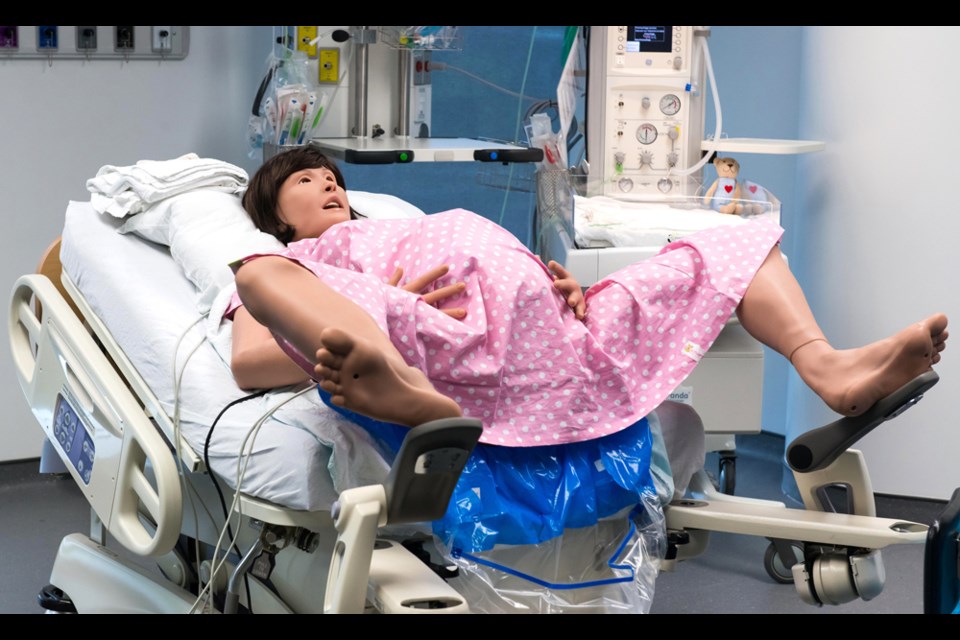With quality clinical placements increasingly hard to come by, BCIT’s nursing program has had to come up with creative solutions for giving students practice delivering babies.
For about eight years, they’ve relied on high-tech mannequins in the program’s simulation labs.
There’s just one problem – all their dummies are male.
“We haven’t been able to do it well,” associate dean of speciality nursing Cheryl Isaac told the NOW. “We’ve been able to strap on a belly and we’ve been able to put a wig on a male and kind of change the anatomy, but it hasn’t been very realistic, let’s put it that way.”
To address the gap, the BCIT Foundation is raising money for a $115,000 state-of-the-art female birthing simulator, a.k.a. Lucina.
“The BCIT Simulation Lab for Specialty Nursing is in critical need of this equipment,” states a foundation funding proposal, “as today’s practice of dressing a male mannequin as a pregnant woman makes it challenging for students to believe that they are caring for a woman giving birth.”
Lucina will be the first female mannequin for BCIT’s nursing and specialty nursing programs and one of the first of its kind in the province.
Unveiled in early 2014 by Montreal-based CAE Healthcare, the Fidelis Lucina Maternal Fetal Simulator can pump out eight babies per hour and simulate an array of complications, including breech births, pinched umbilical cords and major post-partum bleeding – the latter supported by a two-litre fluid tank.
She blinks, talks and comes with both static and dynamic cervixes to simulate all stages of dilation and effacement.
She can deliver in multiple birthing positions and comes with a “highly realistic and deliverable placenta” as well as a baby that has a palpable soft spot and cries when it’s born.
A realistic simulator is an important learning tool for student nurses, according to Isaac.
“It becomes very real to them as they’re working with a simulator,” she said, “and that translates very well.”
Simulations are not a substitute for real experiences, Isaac said, but most of the high-risk scenarios her speciality nursing students need practice on don’t happen very often.
“How do you prepare people for those experiences?” she said. “For nurses, that’s an important piece.”
Practising on Lucina means students will be better prepared for real-life births during their clinical rotations.
“I wouldn’t say it substitutes completely, but it certainly helps” Isaac said.
BCIT hopes to have Lucina in place by September 2017.



